One of my crappiest posts ever.
Occasionally I rerun a favorite older post. This one was originally published in May of 2015. For this version I’ve edited the text, changed the title slightly, tweaked the formatting and added a photo.
For reasons that will become obvious, this post brings back strong memories of my teaching days and the many opportunities this particular subject gave me to use a sophomoric sense of humor with my high school students as a teaching tool. With this presentation I’ll resist most of those opportunities but knowing me, I’ll probably slip one in.
Since you’re reading this you’re probably a birder, bird photographer or nature lover so you’ve seen your share of pooping birds. But bird poop isn’t really “poop” in the traditional sense – its composition is quite different from mammal poop, including that of humans, and that incredibly fortunate adaptation originated with the shelled egg.
First a little background and I promise not to use the word “poop” again.
Most mammals excrete their toxic nitrogenous wastes in the form of urea but birds and reptiles produce uric acid instead. There’s good reason for that. Urea is soluble in water and in mammals is excreted in dissolved form in their familiar urine, which is mostly water. But birds as developing embryos must survive their time in the egg with their toxic wastes also enclosed within the shell which is a problem not faced by live-bearing mammals. If birds produced water-soluble urea, the urea would quickly build to toxic levels throughout the egg and kill the embryo. So birds produce uric acid instead. Uric acid is insoluble in water and crystallizes out of solution and is stored harmlessly within the egg, and separately from the embryo, until hatching.
“Thus from an embryonic necessity was born an adult virtue”.
After hatching, birds concentrate and store uric acid within the cloaca before it is voided. Birds can excrete 1 gram of undissolved uric acid in less than 3 ml of water but mammals require up to 60 ml of water to excrete the same amount of urea so this is also a weight-saving device for flight. Water (urine) is heavy. Imagine birds trying to take off or maneuver in flight with their “tank” (urinary bladder, a structure lacking in birds) full of heavy, sloshing urine…
In birds, sexual products (sperm and eggs), metabolic wastes (uric acid) and digestive wastes (feces) must all pass through the cloaca (which literally means “common sewer”). The cloaca is a storage chamber opening to the outside at the vent. So birds have only one opening to the outside for elimination of these products, while mammals typically have two.
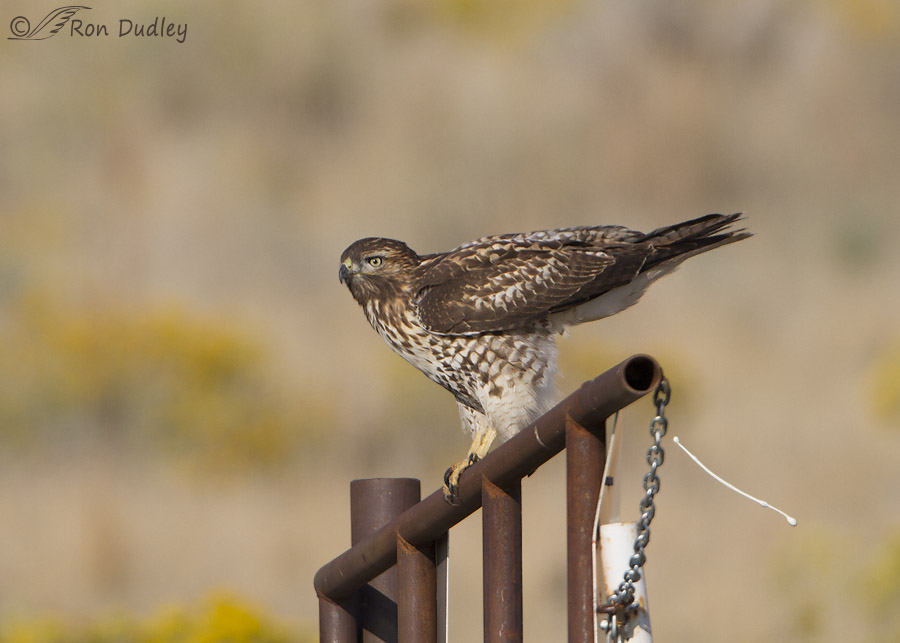
Sorry for all the heavy reading but this explains some things we’ve all seen in the field. Birds excrete uric acid in the form of a relatively thick white paste (darker digestive wastes that haven’t been eliminated through the mouth as pellets may also be included) instead of water- based urine, as in mammals.
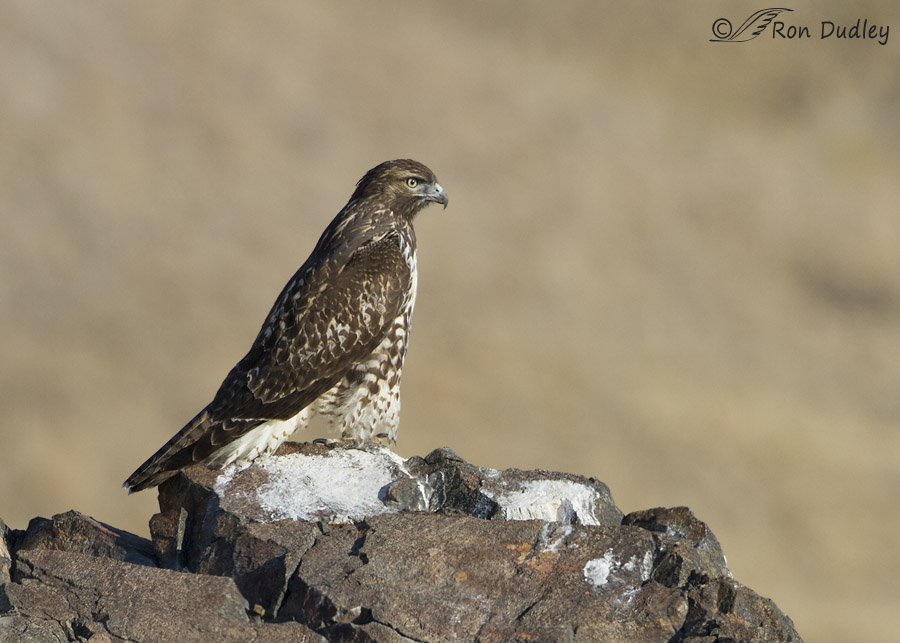
That paste collects on habitual perches and many of us call it “whitewash”. It can be aggravating to photographers because some see it as unsightly in their photos. It’s more than aggravating to car owners. Because of its insolubility in water, whitewash is incredibly persistent. I don’t think Noah’s floods would wash it away.
This rocky perch, part of a huge boulder on the slopes of Antelope Island’s Frary Peak, is a favorite perch for birds like Red-tailed Hawks, Chukars, Western Meadowlarks, Rock Wrens, Sage Thrashers and Lark Sparrows but I seldom use any photos of birds using this perch because the rock is so heavily stained with incredibly bright and persistent whitewash. Several years ago I noticed that even after a huge rainstorm the whitewash had been unaffected so using some bottled water I attempted to scrub away a tiny portion of the whitewash as a test. It simply would not come off.
Water is often referred to as the “universal solvent” but obviously even water has its limits.
Several of the following images are soft but I think they’re sharp enough to make my points.
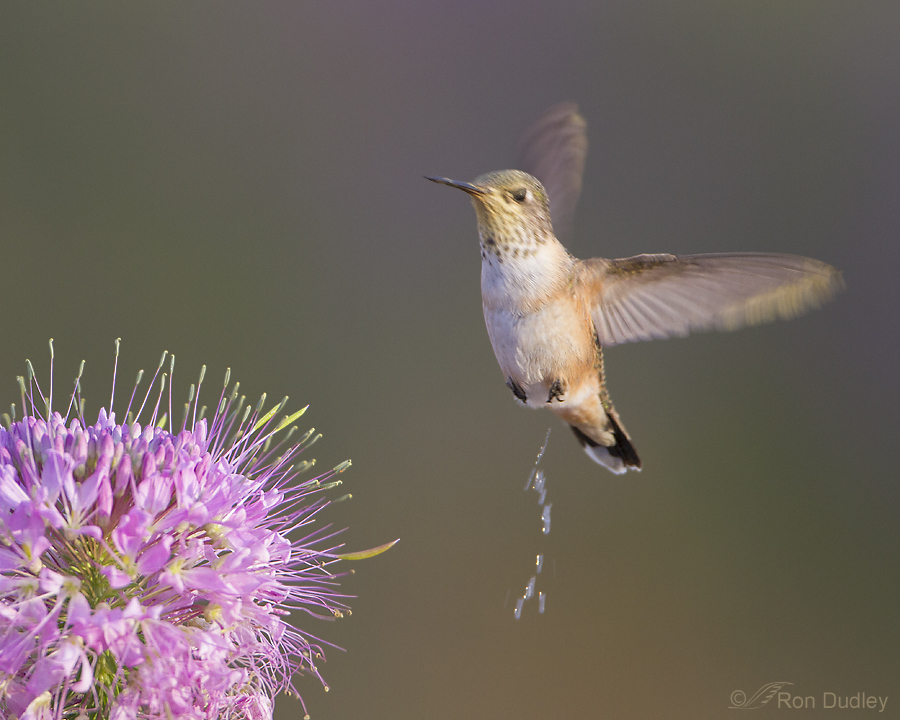
Some birds take in so much water in their diet that excess amounts of it must also be voided – many hummingbirds are a case in point. Flower nectar is mostly water so hummers have to ingest a lot of water to meet their nutritional requirements.
I photographed this one as it was feeding on Rocky Mountain Bee Plant on Antelope Island and just happened to push the shutter button as it voided some of that excess water. The water also contained some white uric acid (out of solution of course) but as you can see it’s mostly water.
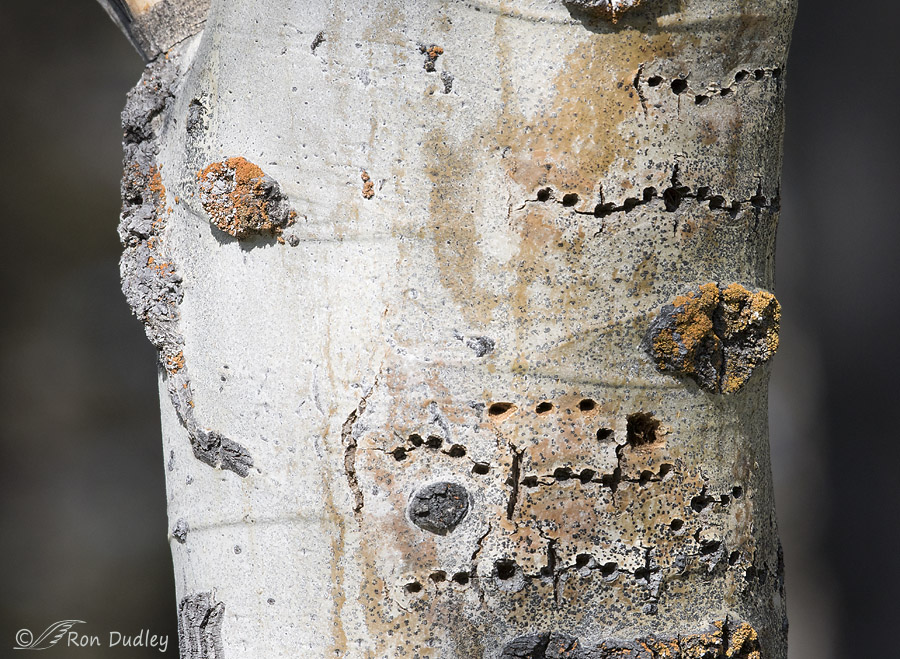
Prior to nesting season the diet of Williamson’s Sapsuckers is made up almost entirely of tree sap harvested at sap wells like you see here.
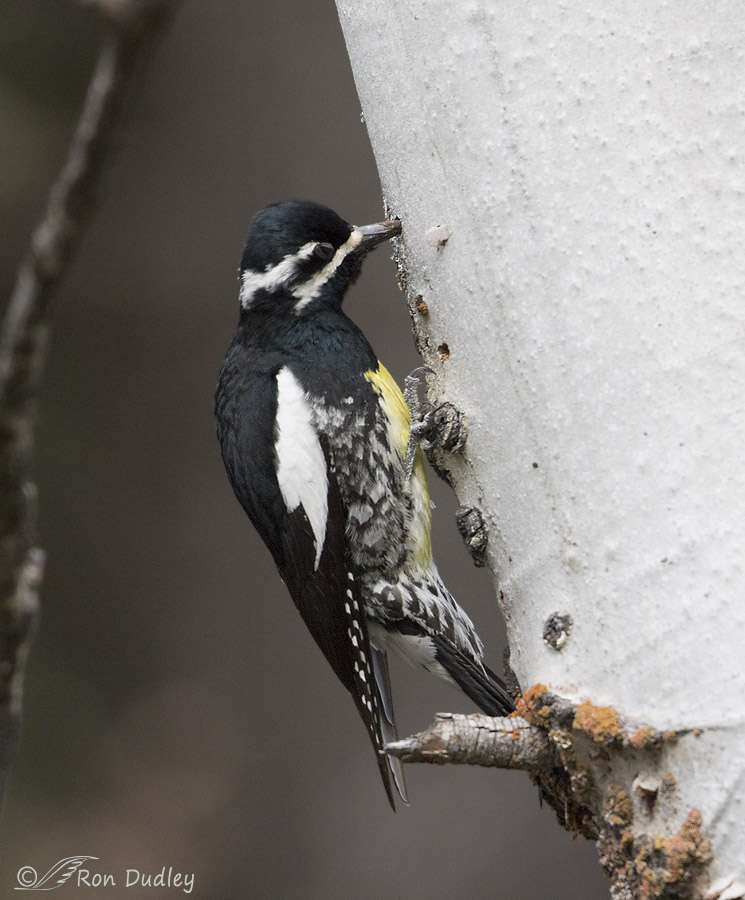
Here you can see the male of the mated pair taking a sap break in-between bouts of defending (or attempting to establish) his nesting territory from the likes of Northern Flickers, Mountain Bluebirds and Red-breasted Nuthatches.
Tree sap also has a high water content.
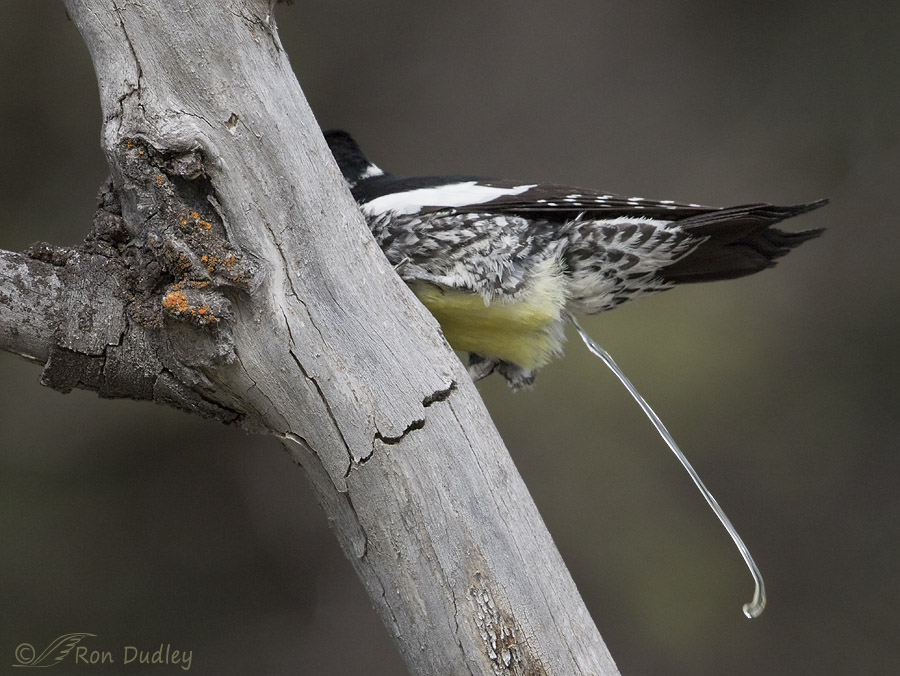
So, you guessed it, the sapsucker soon voided a big batch of excess water. After the eggs are laid these birds begin to consume lots of ants and at that point their wastes would also include darker indigestible chitin from their exoskeletons.
There’s another consequence of birds having a cloaca and eliminating sexual products, sperm and eggs, through the cloacal opening.
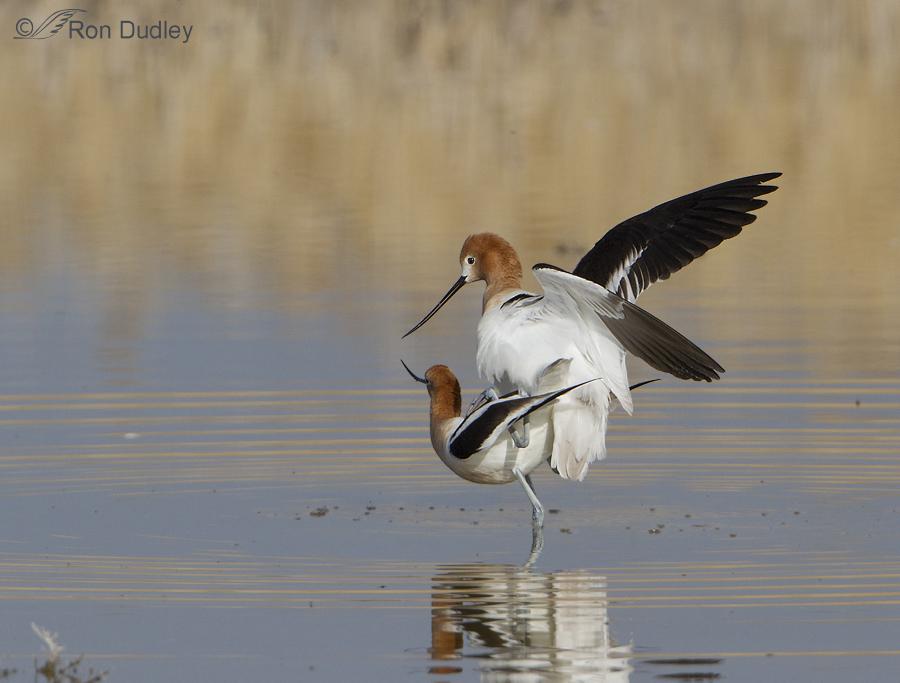
Since most birds lack a penis (ducks, geese, swans and large ratites are exceptions), sperm must be passed from male to female through the awkward process of pressing their cloacal openings together. Some folks call this act the “cloacal kiss”.
OK, I’ve babbled on for too long. I hope you’ll forgive, or at least tolerate, the bio-geekiness of this post. It may not be for everyone but this stuff fascinates me so…
I just went with the flow.
Ron


a million thanks for the ‘bio-geek’ post…I loved it!! I learned so much.
and just the other day I saw a hummer poop and it did look like water
and now I know why! ;-D
Thanks Ron!!
A terrific post – both educational and entertaining. I am most surprised by the hummingbird shot; even though we have multiple hummers every day at the feeders around our house we have never seen this happen.
I’ve seen and photographed my share of guano covered rocks, and it is one of the signs I look for when searching out hawk and owl roosts on cliff sides. But I’ve never tried to clean off any whitewash from any rock. As one of the characters on the TV show Murphy Brown once said: “I may be crude, gross, and disgusting but I draw the line at abominations!”
Perhaps I think too much about the awesome formation in northwestern New Mexico named Shiprock, but I’ve started referring to sites like in your second image as Shitrock.
“we have never seen this happen”
Rich, I think it happens too fast and the “stream” is too small and clear to be seen with the naked eye. I’ve never seen it with the naked eye either but I’ve photographed it several times. I take a lot of hummer shots in bursts, which probably helps.
Thanks to your comment, and the power of suggestion, in the future I’ll probably be calling that whitewashed rock on the island “Shitrock”. Very appropriate if you ask me.
Ron, I am late in posting a message to you on this lesson. I don’t remember much about what was taught in my Biology classes back in the day, but I am sure nothing about this! Interesting to know and never really gave it much thought. I have watched Eagle cams and Osprey Cams and seen the Poop Shoot. They really project them out. Thanks for the information. I will never look at those the same way again. Ha Ha By the way I had a bird fly over head and make a nice drop on my head and t shirt one day when I was in the yard.
Trudy, I’ve had gulls poop on me. That stuff burns.
EXCELLENT!!
Thanks, Dick.
Biologists are inordinately fond of poop even when compared to the general public.
Yup, and I’m a biologist so that’s my excuse. Or at least one of them…
Echoing all the other comments – Great post!
Your bio classes must have been the BEST!
Thanks very much, Carolyn.
Great post. Another lesson learned And another reason you do not let bird poop stay on your car for too long
And another reason you do not let bird poop stay on your car for too long
“another reason you do not let bird poop stay on your car for too long”
A point I should have made in my post, Diana. It’s called uric ACID for good reason. And as I can attest, it also burns the skin.
Great post, fascinating info, even for this un-sciency person (recollect a disastrous experience in jr. high biology). But so intrigued by the idea of an egg containing both the baby bird and the uric acid that would otherwise kill it, nature’s adaptations are endless! And “lightening the load” is not a figure of speech but an actual necessity!
My fav pic here is of that hummer … I often see their lightning-quick releases but never knew what it actually looks like. Thanks for the show-and-tell, Doc!
“so intrigued by the idea of an egg containing both the baby bird and the uric acid that would otherwise kill it”
Chris, that often makes me think of the fact that in some Asian countries, consuming boiled, fertilized duck eggs when the embryo is almost ready to hatch is considered a delicacy. It’s called balut.
https://en.wikipedia.org/wiki/Balut_(food)
So presumably those folks are also eating the toxic stored wastes inside the egg, along with the embryo. To each his own.
Nope. Unh-unh. Revolting. Sorry, the photos in the link are horrific. If I wasn’t already vegan I would be now. At least I’d never eat another egg.
I wondered if you’d come back and follow that link…
And I just got home so thought to see what more had been posted today — and, oh my, I’m with Lyle on this one! Holy cow…I’m vegetarian and do eat eggs occasionally, but definitely NOT the fertilized kind!
Hello Ron –
Informative, as always. I was aware of the uric acid and whitewash, but did not know about the clear excretion from some varieties of birds. And, “flying excreta” is a term I will probably never be able to get out of my memory!
Your reference to “sophomoric humor” brought back one memory from my few years of teaching sophomore biology. You can imagine when, in a section on bird identification, we discussed bird scientific names. Yes, the robin and mallard brought about significant snickers!
Thanks again – great post!
” “flying excreta” is a term I will probably never be able to get out of my memory!”
Quentin, Lyle has a history of providing such colorful terms and phrases.
And yes, scientific names like Turdus migratorius are always good for a snicker.
Thank you. I really appreciate the biology/science lesson. There was a lot there I didn’t know and found interesting. I’m left wondering how sperm is kept separate from the uric acid (and sometimes water or chitin) that are being eliminated.
“I’m left wondering how sperm is kept separate from the uric acid (and sometimes water or chitin) that are being eliminated.”
Lleni, I can only presume that the cloaca is evacuated of other products prior to mating.
That’s another whole lecture. Briefly, sperm produced by the male is stored in tubules surrounding the cloaca until released at mating. In females, sperm is passed through the cloaca at mating and is then stored in small sacs at the end of the oviduct near where it connects to the cloaca. The sperm is released from this storage sac when an egg cell is ready to be released from the ovary. Waste materials pass out of the body through the cloaca but are never held there so sperm and waste products never encounter each other. In the Dunnock, a European songbird, males peck at the female’s cloaca just before he mounts her for mating. The pecking is a way to remove stored packets of sperm from previous males, thus assuring his sperm will be the sperm to fertilize the egg (unless another male mates with her before his sperm is released).
Great Post!! I have learned so much from reading your blog! Thanks!
Thank you, Joanne.
Fascinating! And I ain’t shittin’ ya.
Poop, farts, sex — all attention-getters in a high school classroom of mostly boys (75-80% most years).
Never really thought about hummingbirds, sapsuckers, etc. and how they dealt with all the excess water in their diets. Thanks to you and Dan, I’m now even more amazed by birds than I was before reading today’s post!
“Poop, farts, sex — all attention-getters in a high school classroom”
That’s for sure, Marty. Plenty of fodder for the high school biology teacher with a sophomoric sense of humor and I was never shy about taking advantage of it as a teaching tool. They remember it.!
“… I was never shy about taking advantage of it as a teaching tool.” One reason why I think you and I would have made good teaching parters — that and our sophomoric senses of humor.
Great lesson. My students were college seniors but they still had their share of laughs when I discussed this topic. A note about hummingbirds. As you indicate, they take in an incredible amount of water. It’s far beyond what a mammal could handle. It is so much water that people once believed there must be some unknown way to circumvent the kidneys (not true) because no on believed the kidneys could handle that volume. We now know that the kidneys do handle all of that water but their filtration rate makes large fluctuations, far beyond what any mamma could do. When active, the kidneys are working very, very fast, far beyond that of a similar sized mammal. But at rest, the kidneys must quickly slow. If that reduction in filtration rate didn’t happen the hummer would quickly dehydrate all of its tissues. When in torpor at night, the kidneys are nearly not functioning to avoid pulling water from tissues. These are amazing creatures!
Very interesting info about hummers, Dan. Thank you for sharing it.
Brilliant. Evolutionary magic.
Thank you teacher. Muchly.
You’re welcome, EC. Muchly.
I am coming back to this post later (as I often do). As I left it the first time it started my mind up, wondering, considering, pondering. I am pretty certain that evolution is NOT accidental. It is slow but often supremely efficient. So what were our appendixes designed to do? How long will it take to discard them? And does our species have that much time left?.
EC, the evolution of the appendix is still debated.
It’s my understanding that it’s thought that our appendix is a remnant of the cecum that many mammals still have. In herbivores, the cecum stores food material where bacteria are able to break down the cellulose. As humans evolved and their diet changed to include far less cellulose the need for the cecum diminished, as did its size.
But here’s another proposal reported by Duke University Medical Center:
” The lowly appendix, long-regarded as a useless evolutionary artifact, won newfound respect two years ago when researchers proposed that it actually serves a critical function. The appendix, they said, is a safe haven where good bacteria could hang out until they were needed to repopulate the gut after a nasty case of diarrhea, for example.”
As to your final question, I doubt it.
I loved the post! Great photos too! One of my major goals in rehab was getting that “crap” off kennels, perches, carpets, towels, floors, walls.I can attest to it’s in-solvability in water. Power washer and scrappers in hand it still would not budge at times. Nice thing the white part is brittle so it slowly chips off when thick. As I spent hours, years, power washing and scraping I often thought paint should have the same longevity properties.
Hummingbird waste is clear except for a small dark elongated slightly curved (banana shaped) particle called a boatman. Interestingly hummingbird waste is still sticky so some of the sugars must not be digestible and pass through.
” I often thought paint should have the same longevity properties.”
Made me smile, April. If only.
Despite working with wild bird rescue for 35 years, I had never put two and two together about the uric acid and embryos in the egg! Fascinating. HS Biology teachers like you were a joy to me when I was doing education with our ambassadors – I could just enter someone’s classroom and know how special the teacher was. Thanks, Ron! Hope your back and all is improving.
If I taught Louise Shimmel anything at all about birds I’ve accomplished something!
‘I just went with the flow.’


Fascinating, thank you.
You’re very welcome, Ann.
That was one of the best posts ever! I am 76 years old, a birder, have always been interested in biology, and ended up being a nurse. I never knew any of that! Having been an OB Gyn nurse, reproduction is kind of old news to me. But THIS? I learned so much. I have always had parakeets too and wondered about the white stuff in the poop. Now I know. Thank you!
Loved your comment, Connie. All of it.
Great post, very informative, at least for me! Most of this was news to me, honestly I hardly new any of this.
I’m delighted to know you found it educational, Ken.
Thanks Ron for all of the technical aspects of this post. It brought up a lot of good memories of learning about this subject in my 10th grade biology class taught by you 50 years ago!
Those were good times, weren’t they Brett.
You may have amassed the largest photographic portfolio of flying excreta known. If you would have had all these when you were teaching I can imagine your students either grimacing from disgust or struggling to stay in their seats while laughing uncontrollably.
Fascinating post and to see you in full on teacher mode,
I live near a heronry. That’s why the cars are always krpt in the garage.
“ou may have amassed the largest photographic portfolio of flying excreta known.”
You’ve only seen a small part of my collection, Lyle. I have hundreds of similar photos. Finding them all would be another matter, since I don’t categorize my photos based on behaviors.
This morning I noticed a single heron on our local rookery. Surprised me this early in the year.
Hi Ron. I loved this – very interesting and great pictures. And answers to questions that have been floating around – mostly unformed – in the back of my head. Not wasted time.
Good to know, Frances. Thanks.
Great lesson with great pictures! Thanks so much Ron! Hope your feeling better!
Thank you, Ernest.
Excellent post Ron. Much appreciated by an almost 85 year old guy who had zero interest in biology as a teen. In all my adult years had to play catch up and now have a strong interest in subjects such as this. When we moved here 16 years ago and discovered eagles I became a birder. I will always remember the first time I was taking a photo of an eagle perched on a limb with her back toward me and as I was taking her photo thinking she was about to take off she sent this long stream of white stuff streaking right toward me.
“an almost 85 year old guy who had zero interest in biology as a teen”
That was pretty much me as a teen too, Everett. A mediocre (in my opinion) high school biology teacher might have played a part but it was mostly no one’s fault but my own.
I appreciate the info– it wouldn’t have occurred to me that waste=weight
while the bird is flying and must be jettisoned. While reading your text, I
thought about that record long-distance flyer ( was it a Godwit ? ) talked
about in the press a couple of weeks ago– no stopping, no drinking, no
eating for thousands of miles–but I guess that “no excretion needed”” was
somewhat helpful. Still can’t believe that such a feat is possible…….
It’s hard for me to believe it’s possible too, Kris.
Interesting! Know the stuff is hell on vehicles and my gas grill… Biology lessons from time to time ARE appreciated………
Biology lessons from time to time ARE appreciated………
” Know the stuff is hell on vehicles and my gas grill”
Judy, one summer a Great Blue Heron habitually roosted in my big elm tree overhanging my deck. You wouldn’t believe the mess…
WOW !! Thank you for that lesson.That is why I have followed you for so long. The great photography and the information you so freely share with your readers. Please keep it up Ron……G.
“Please keep it up Ron”
I’m working on it. Thanks for the kind words, Gary.
Superb lesson. Oh, the things there are to know about birds. Thank you.
Thanks, Chuck.
Bio-geekiess much appreciated. Learned something new again today. Thanks Teach!
“I just went with the flow.”
You just could not resist slipping one in.
Nope, I couldn’t. It’s in my genes.